|
|
|
Книги издательства «Art Book Cologne»

|
«No Small Journeys relates to a series of photographs of Denver and its suburbs near the Rocky Flats Nuclear Weapons Plant, a version of which was published by Aperture under the title Our Lives and our Children in 1983. In recent years, Adams felt it was important to expand the project to emphasize the simple beauty and humanity that can be found in the seemingly improbable environments we have created for ourselves all across America. Rather than focus on some looming disaster, he composed this series as a testament to that unlikely and markedly human beauty, summing up his new reaction to the work with a quotation by Edward Dahlberg: «Homer sang of many sacred towns in Hellas which were no better than Kansas City».» |

|
«Charles Stuckey writes in his essay «Lichtenstein and Surrealism» that, «Searching for a worldwide audience in the 1930s, the Surrealists nowhere received more welcome than in the United States, with important exhibitions at the Wadsworth Athenaeum in Hartford and The Museum of Modern Art in New York. The Julien Levy Gallery quickly became something of an official New York headquarters. By the 1940s when Lichtenstein attended art school at Ohio State University, Surrealism was widely acclaimed as the matrix style for contemporary American abstract art». So no one should be surprised that the young Lichtenstein's work of that era is «fundamentally Surrealist in spirit», and that the style that influenced him as a young man would carry over into his life's work. The paintings and works on paper in Conversations with Surrealism show the movement's continuing power and inspiration through to the 1970s, when Lichtenstein drew on the work of Dali, Magritte and Picasso. The works from this series endow Surrealist archetypes such as dreamlike landscapes with Lichtenstein's distinctive style, weaving the artist himself into an art-historical narrative. Conversations with Surrealism offers a glimpse into the development of some of Lichtenstein's best-known motifs, including his «self-portraits», in which various objects represent the artist's head and face. Includes a work of short fiction by Frederic Tuten, author of The Green Hour.» |
|